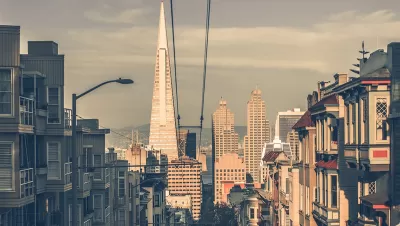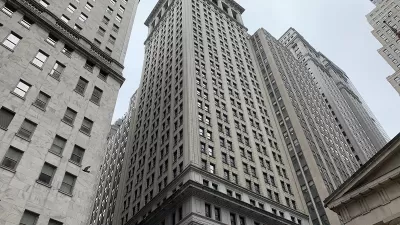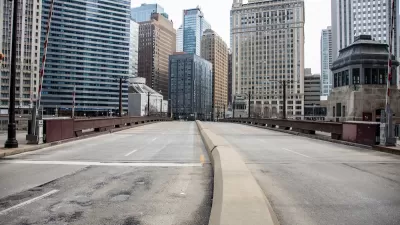A San Francisco nonprofit is developing a set of recommendations for making downtown neighborhoods more flexible and welcoming to a more diverse set of users.

A San Francisco nonprofit is working on a plan to redesign the city's streets to address the changes wrought by the COVID-19 pandemic and find ways to adjust to the post-COVID future, reports Jason Plautz.
The city hopes to revitalize areas that have seen a decline in users as remote work and other changes alter traditional commuting patterns and affect business for restaurants, shops, and other downtown services that historically relied on office workers. Around the country, once-bustling central cities emptied out as office workers shifted to remote work and businesses shuttered. According to Robbie Silver, executive director of Downtown Community Benefit District (CBD), the organization leading this initiative, San Francisco's Financial District "is a prime example of an urban space that suffered in the pandemic."
Downtown CBD has tasked SITELAB urban studio with conducting public outreach and developing a set of recommendations for how the city can make downtown neighborhoods "more inviting and flexible" for a wider variety of users. The article quotes Laura Crescimano, co-founder and principal at SITELAB: "If you look at European downtowns and other cities with vibrant downtowns, they serve more a multi-function, multi-purpose role." Figuring out what those multiple functions are for San Francisco, says Crescimano, is one of the major questions the project seeks to answer.
FULL STORY: Initiative will rethink San Francisco downtown for 'post-COVID' work patterns

Maui's Vacation Rental Debate Turns Ugly
Verbal attacks, misinformation campaigns and fistfights plague a high-stakes debate to convert thousands of vacation rentals into long-term housing.

Planetizen Federal Action Tracker
A weekly monitor of how Trump’s orders and actions are impacting planners and planning in America.

San Francisco Suspends Traffic Calming Amidst Record Deaths
Citing “a challenging fiscal landscape,” the city will cease the program on the heels of 42 traffic deaths, including 24 pedestrians.

Defunct Pittsburgh Power Plant to Become Residential Tower
A decommissioned steam heat plant will be redeveloped into almost 100 affordable housing units.

Trump Prompts Restructuring of Transportation Research Board in “Unprecedented Overreach”
The TRB has eliminated more than half of its committees including those focused on climate, equity, and cities.

Amtrak Rolls Out New Orleans to Alabama “Mardi Gras” Train
The new service will operate morning and evening departures between Mobile and New Orleans.
Urban Design for Planners 1: Software Tools
This six-course series explores essential urban design concepts using open source software and equips planners with the tools they need to participate fully in the urban design process.
Planning for Universal Design
Learn the tools for implementing Universal Design in planning regulations.
Heyer Gruel & Associates PA
JM Goldson LLC
Custer County Colorado
City of Camden Redevelopment Agency
City of Astoria
Transportation Research & Education Center (TREC) at Portland State University
Jefferson Parish Government
Camden Redevelopment Agency
City of Claremont





























